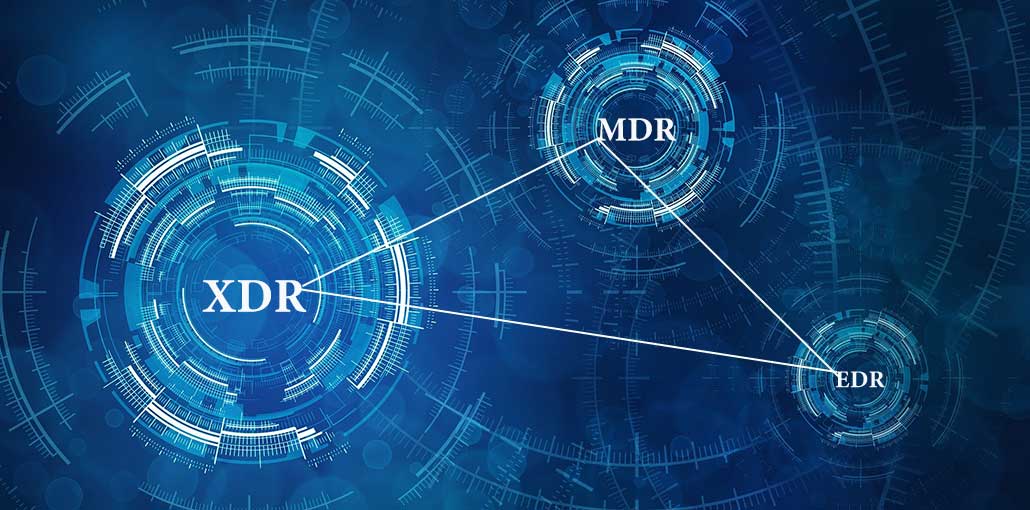With so many different network security solutions on the market today, it can be difficult to know which ones are truly worth your consideration. While some are totally worth the costs, it’s not easy for non-experts to distinguish between winners and losers in this always-changing field full of technical jargon.
Of all the security options available, extended detection and response (XDR), managed detection and response (MDR), and endpoint detection and response (EDR) are three of the most popular choices. Each of these solutions is unique, but all still have elements in common with the others. For those looking to adopt new network security tools, here are the differences between XDR vs. MDR vs. EDR.
Defining XDR, MDR and EDR Solutions
Before diving into the differences between each of these security solutions, it’s important to first have a working understanding of them on their own. Let’s take a moment to define all three of these terms in isolation so that comparing them carries more weight:
- XDR – The most comprehensive solution of the three mentioned here, XDR security is more or less a single-touch solution for securing networks. XDR can be described as a compilation of security tools and services packaged together. But beyond being comprehensive, a good XDR will also enable cross-domain intelligence. This means that each element of the XDR solution will be able to share security data in order to do a better job of finding and stopping threats. This is something that can’t really be accomplished when each individual piece is sourced from a different security provider.
- MDR – You’ve maybe noticed that XDR, MDR, and EDR all share two letters in their respective acronyms. All three are solutions designed to detect and respond to security incidents. With MDR, the “managed” aspect is the unique qualifier. MDR allows organizations to get a security operations center (SOC) staffed by experts, as well as some of the most capable next-gen monitoring tools, all through a service-based offering.
- EDR – While it has the narrowest scope of these three security solutions, this is only because endpoint security requires such care in today’s world. Endpoints are any devices that connect to a network, such as laptops, smartphones, or smart sensors. Protecting these is essential, as there are many and they create certain inherent security challenges—especially due to the proliferation of bring-your-own-device (BYOD) policies and the increase of Internet-of-Things devices.
Now that you have a general idea of the basics of these security tools, it’s time to dig into their differences.
Also read: Managed Detection and Response (MDR): Overview and Importance
What Are the Differences Between XDR vs. MDR vs. EDR?
When thinking about the differences between XDR vs. MDR vs. EDR, it can be helpful to conceptualize them almost like network security Russian Matryoshka dolls. While each is unique, they can all play a part in the same system.
It probably makes sense, to begin with EDR, which would be the smallest doll of the bunch. EDR deals specifically with securing endpoints—not the overarching security themes present with XDR and MDR solutions. At the same time, you can all but guarantee some form of EDR will be present in any XDR or MDR offering to be worth your consideration.
The more nuanced comparison is between XDR versus MDR, as it can be easy for those without extensive network security knowledge to confuse these options. Again, think back to the Matryoshka dolls. MDR fits inside of XDR, as MDR is typically just one piece of an overarching XDR solution, which will also come with EDR, network detection and response (NDR), and potentially other services as well.
Additionally, XDR has the further advantage of being able to provide cross-domain intelligence based on the combined information coming from each service. This builds a more complete picture of what’s really happening on networks—allowing for more rapid and accurate threat intervention.
No matter the size or scope of an organization, in today’s world, network security needs to be a priority. Understanding the differences between XDR vs. MDR vs. EDR can help facilitate better decision-making about adopting and deploying security services.










Leave a comment